The Great American Road Trip (According to AI)
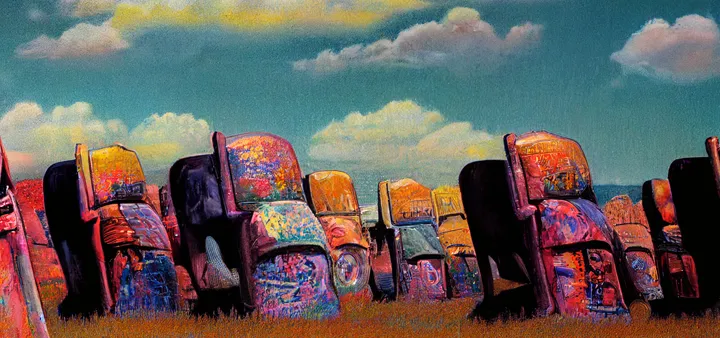
Can Artificial Intelligence create a postcard of a place that doesn’t exist, using images from places that do?
Using AI as a kind of search tool, I was curious how closely it could capture the spirit of a place, like a postcard does.
The typical postcard isn’t as real as it may appear. For instance, Vox recently dove into why a large postcard producer, Dexter Press, had printed the same sky above many different locations.
From artists painting out adjacent buildings to street furniture like light poles and trash cans, the intent of a traditional postcard isn’t realism—it’s beauty. Curiosity. Wonder. Enough, at least, to inspire a visit or to appear a safe bet for road-worn travelers.
Images returned from search results are no different.
Here, AI is interpreting images we’ve already captured in these places and, arguably, is either stealing from those images or adding another pass of touch-ups on top. (I’ll explain the process of iteration in a moment.) Because of the very basic prompt and no use of reference images, you’re looking at these “locations” as purely as the computer can see them—short of a 3D scan.
Enjoy your Great American Road Trip, with AI driving. Where should we go next? Let me know in the comments or on the speedster.news Discord.
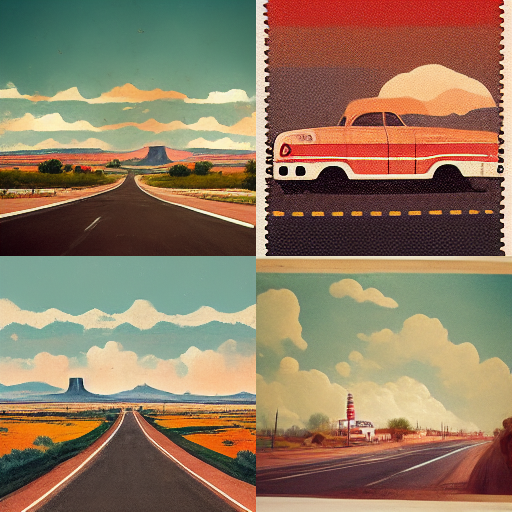
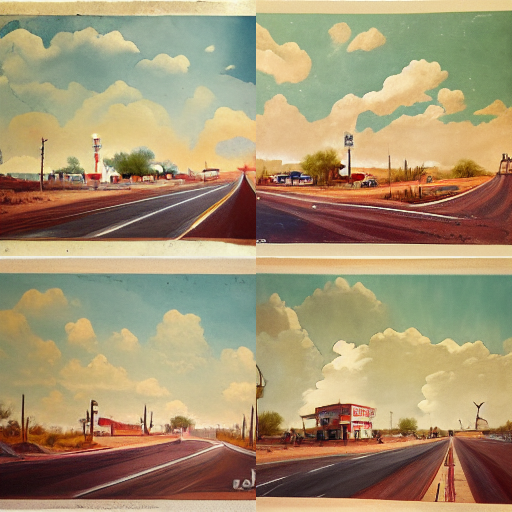
How does this work?
I used Midjourney AI image generation platform and a deliberately simple prompt: /imagine ‘a postcard of [location]’
Midjourney is an AI system that uses a Discord chat server to answer human text prompts and commands with images.
Without going into a huge amount of detail, each /imagine query can become very complex as Midjourney accepts many parameters.
For iterating from an image, setting a style (cyberpunk, leica, photorealistic, da vinci, etc), adding details (wet, raining, dusty, neon, etc), aspect ratio, and the word “postcard”.
Indeed, each iteration uses the human-accepted “best” choice from which to build the next image, the next, and so on. These can be branched—the Mount Rushmore images are a good example of a prompt that ended up diverting into a few unique creations.
See if you can spot the two early iterations above from one of the more complete compositions below.
The important thing? These were all created with a simple prompt, meaning the images generated are more like a search result—all in a traditional American postcard style we’ve all seen before.
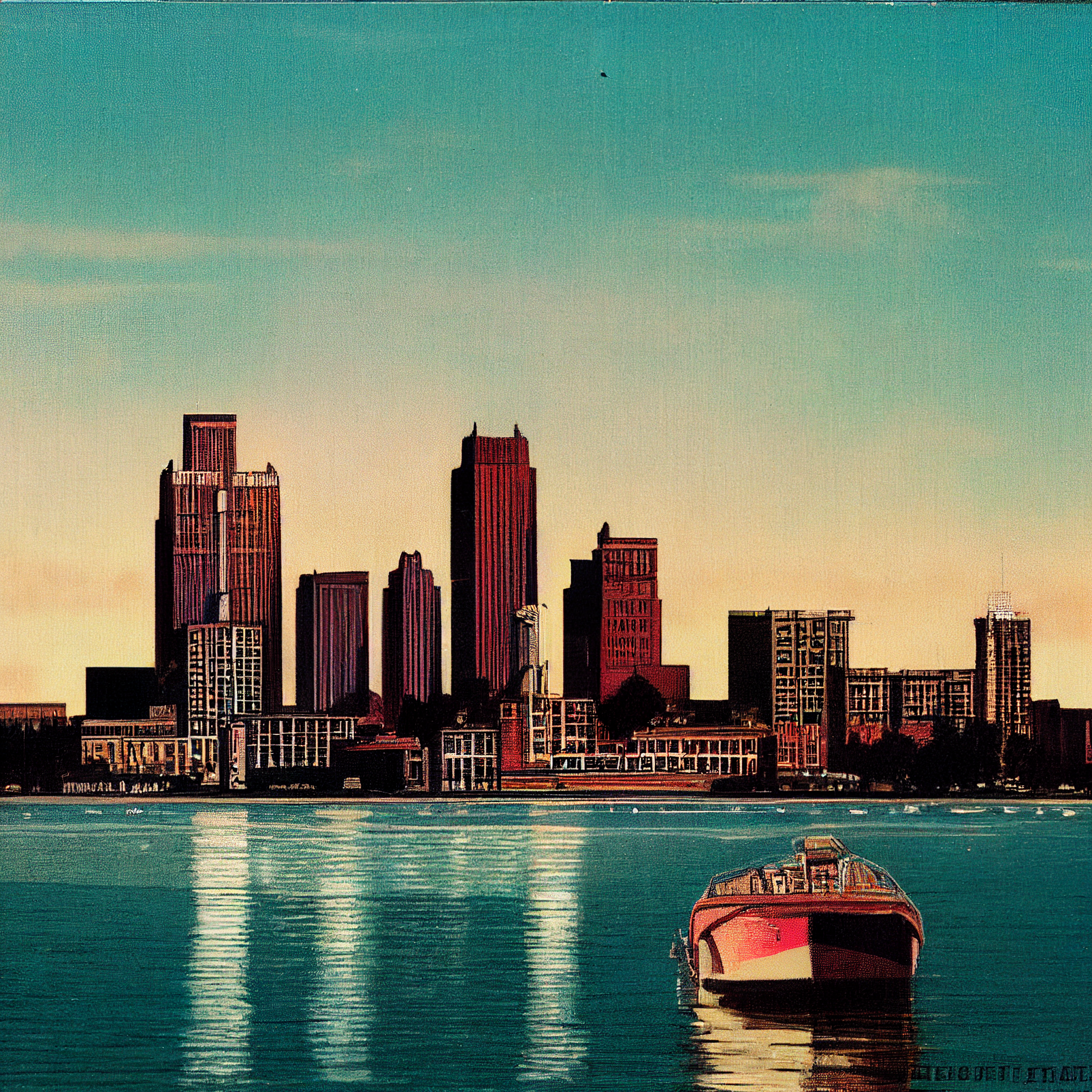
Detroit, Michigan
Starting from the Motor City, excuse the GPS as we criss-cross the country to visit (mostly) places I’ve been to. Love how AI decided to crop out the General Motors Renaissance Center in this picturesque view from across Lake St. Clair, somewhere in Canada.
I, too, started many trips into the U.S. from Detroit so let’s get into it…
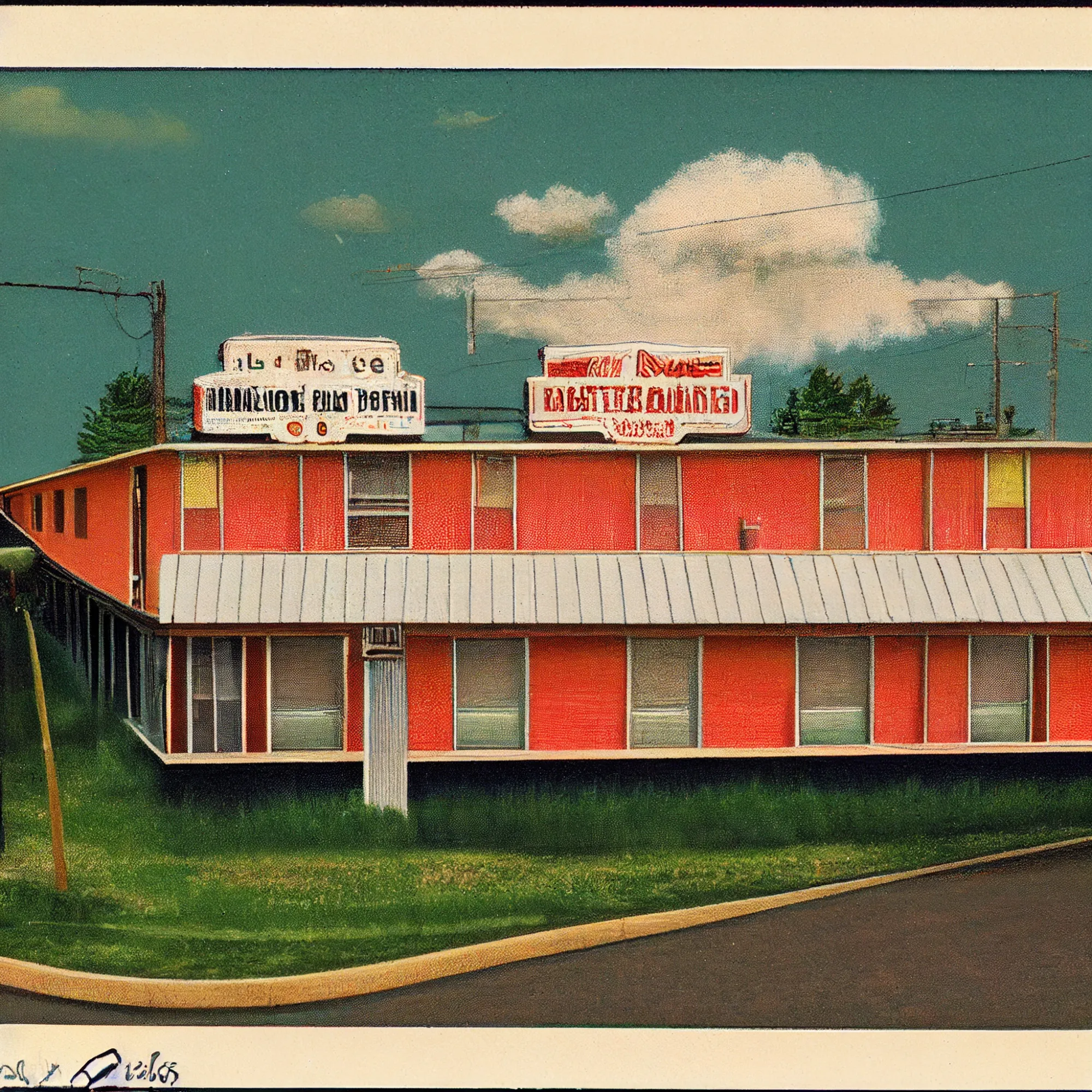
‘A motel in Ohio’
Every American road trip needs an unplanned motel stop in Ohio…best to get it over with early. Which real town does this AI-generated motel belong in?
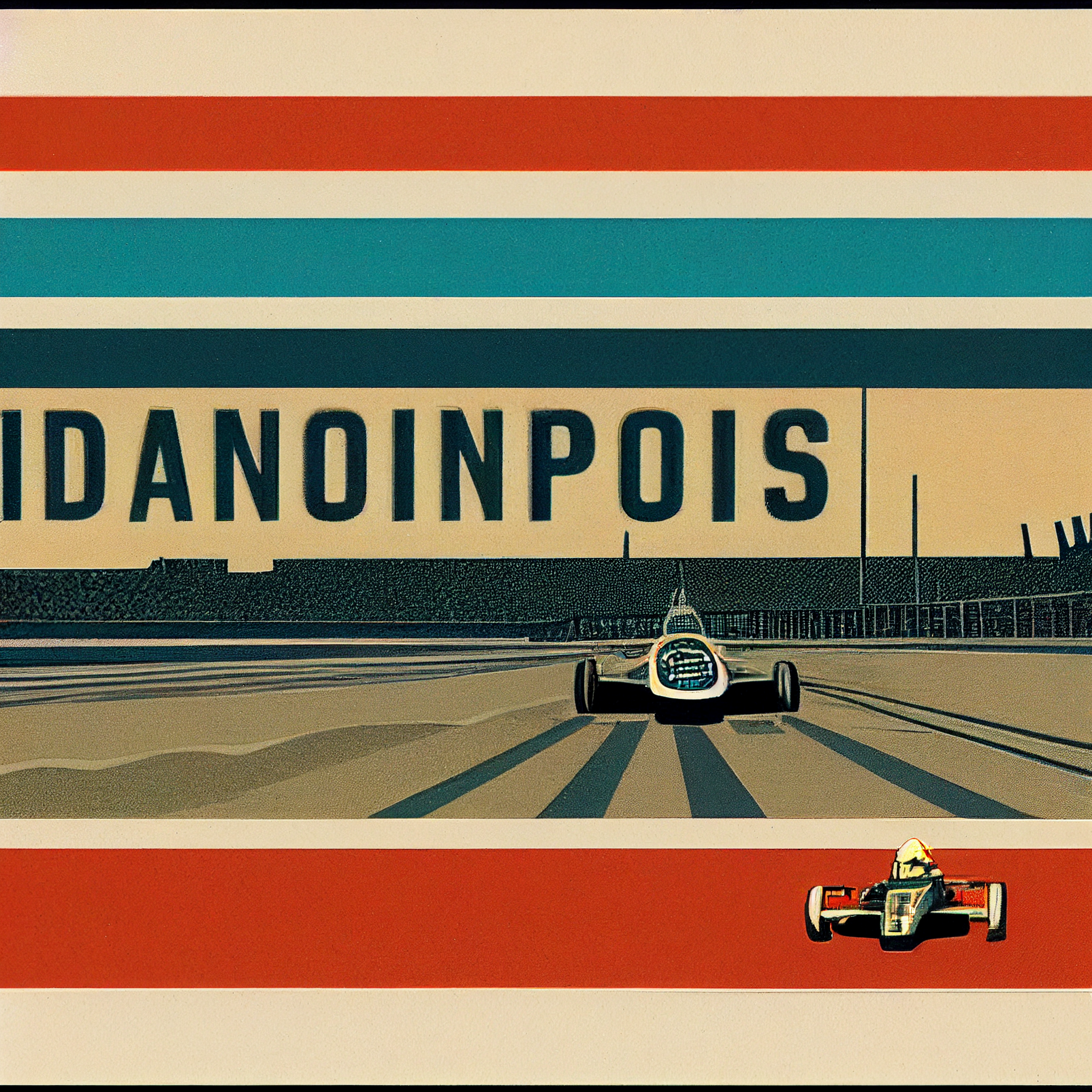
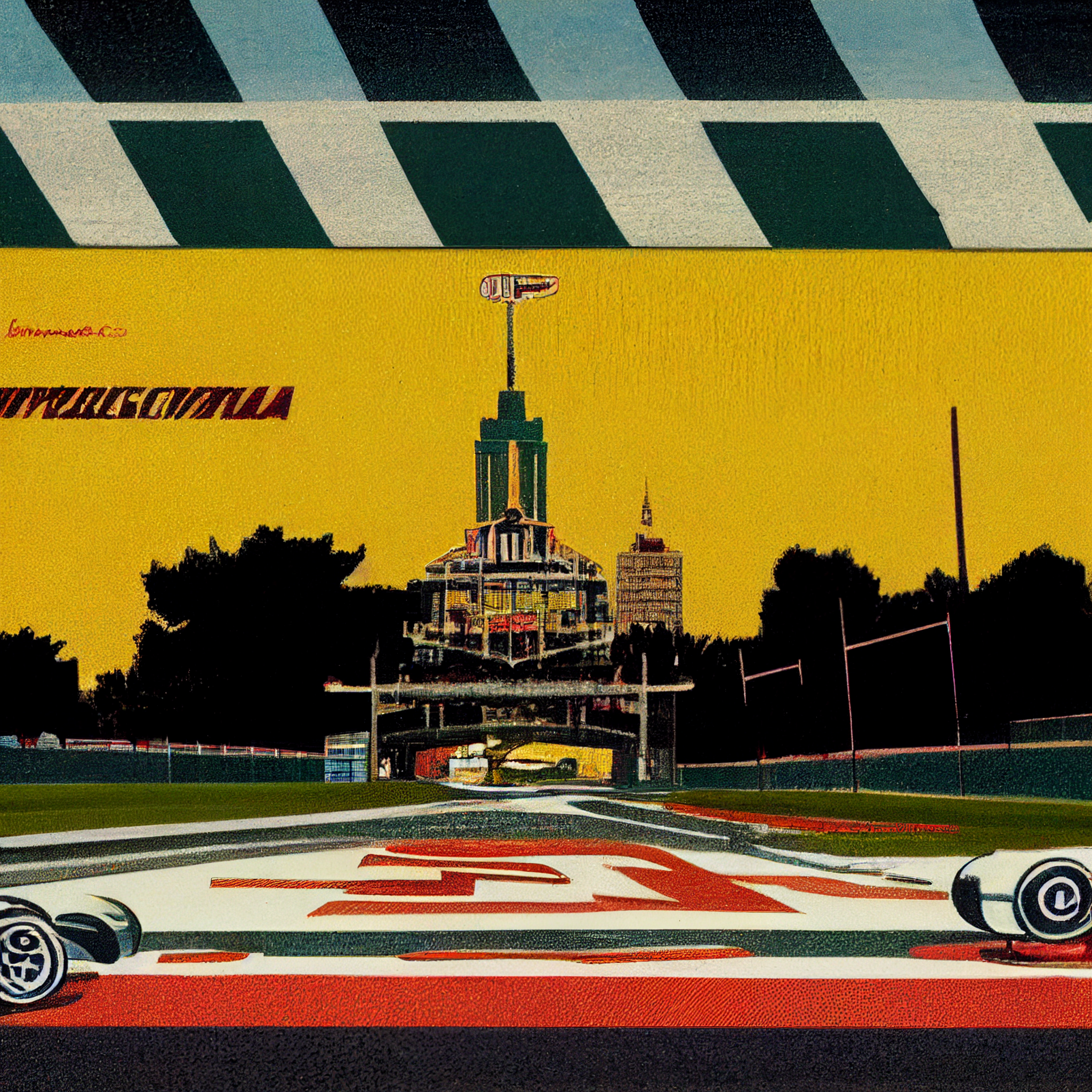
/imagine a postcard of indianapolis indiana • via midjourney
Indianapolis, Indiana
Don’t you love how AI blended the Indianapolis Motor Speedway with the Indiana Statehouse, built in 1888? I can see the T-Shirts now.
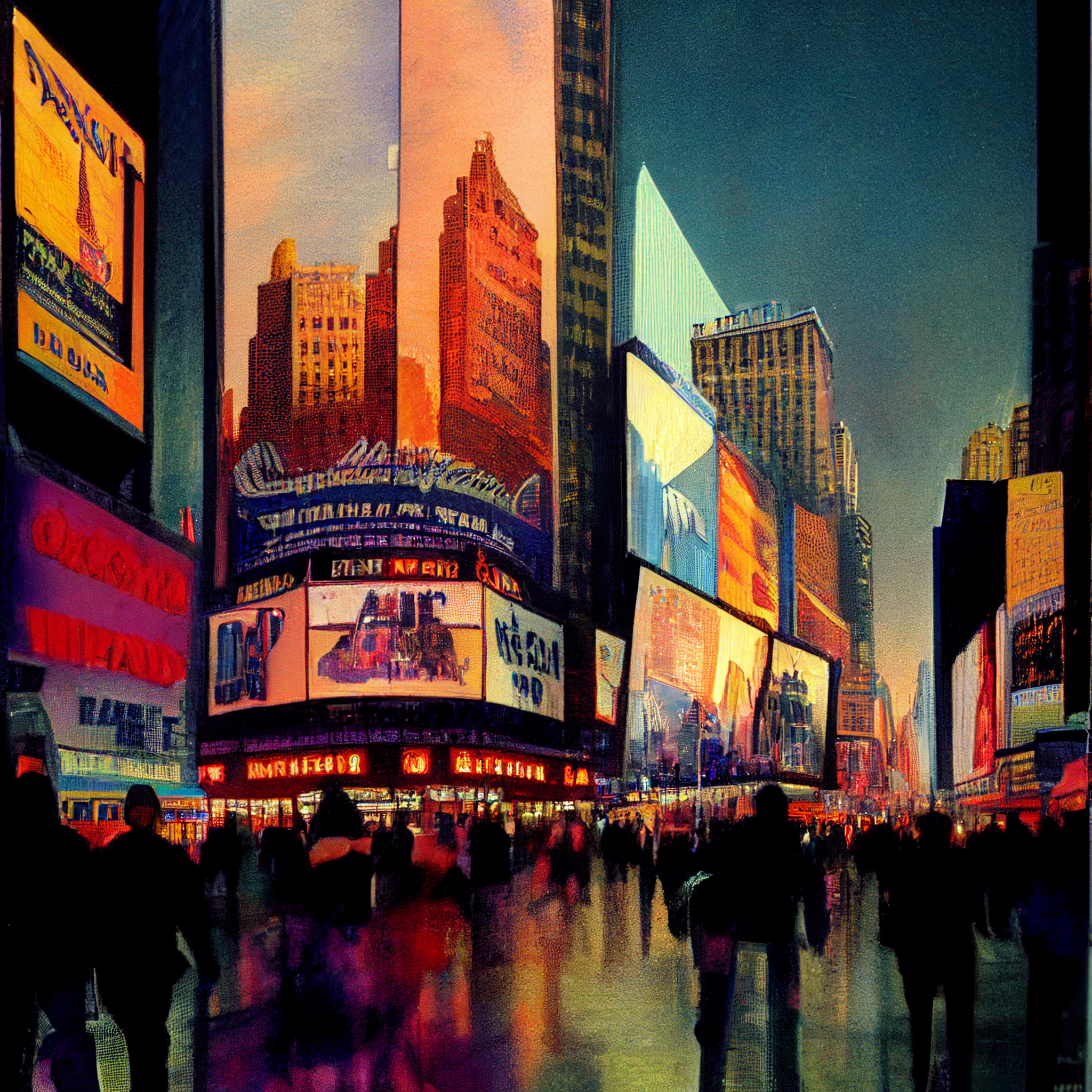
Times Square, New York, New York
Given how many images there are of this place, I’m both not surprised these turned out well…and surprised they turned out so well, with so little effort on my part. Further along, Cadillac Ranch in Amarillo, TX is another spot that AI was weirdly apt at recreating.
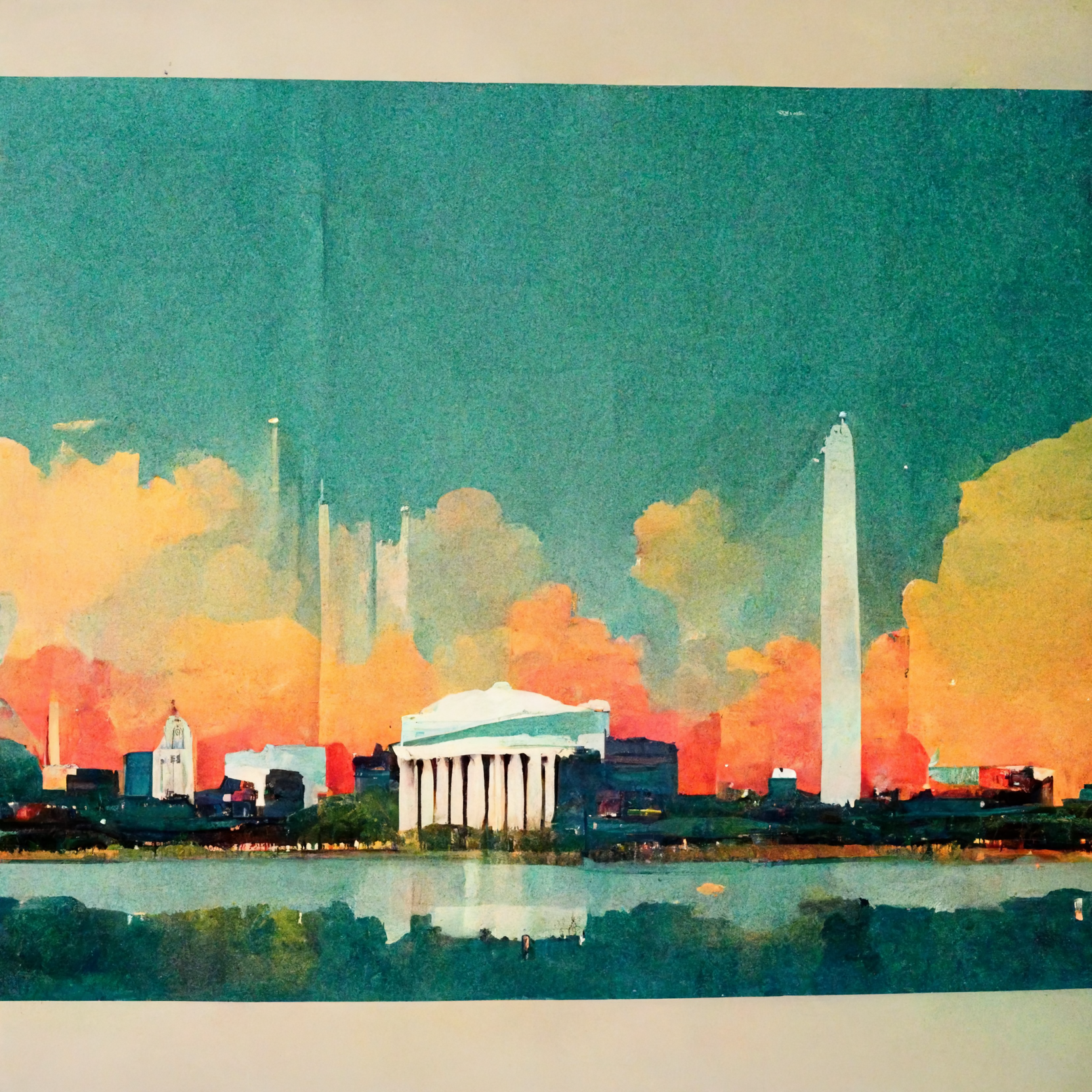
Washington, District of Columbia
All the important details are there…kind of.
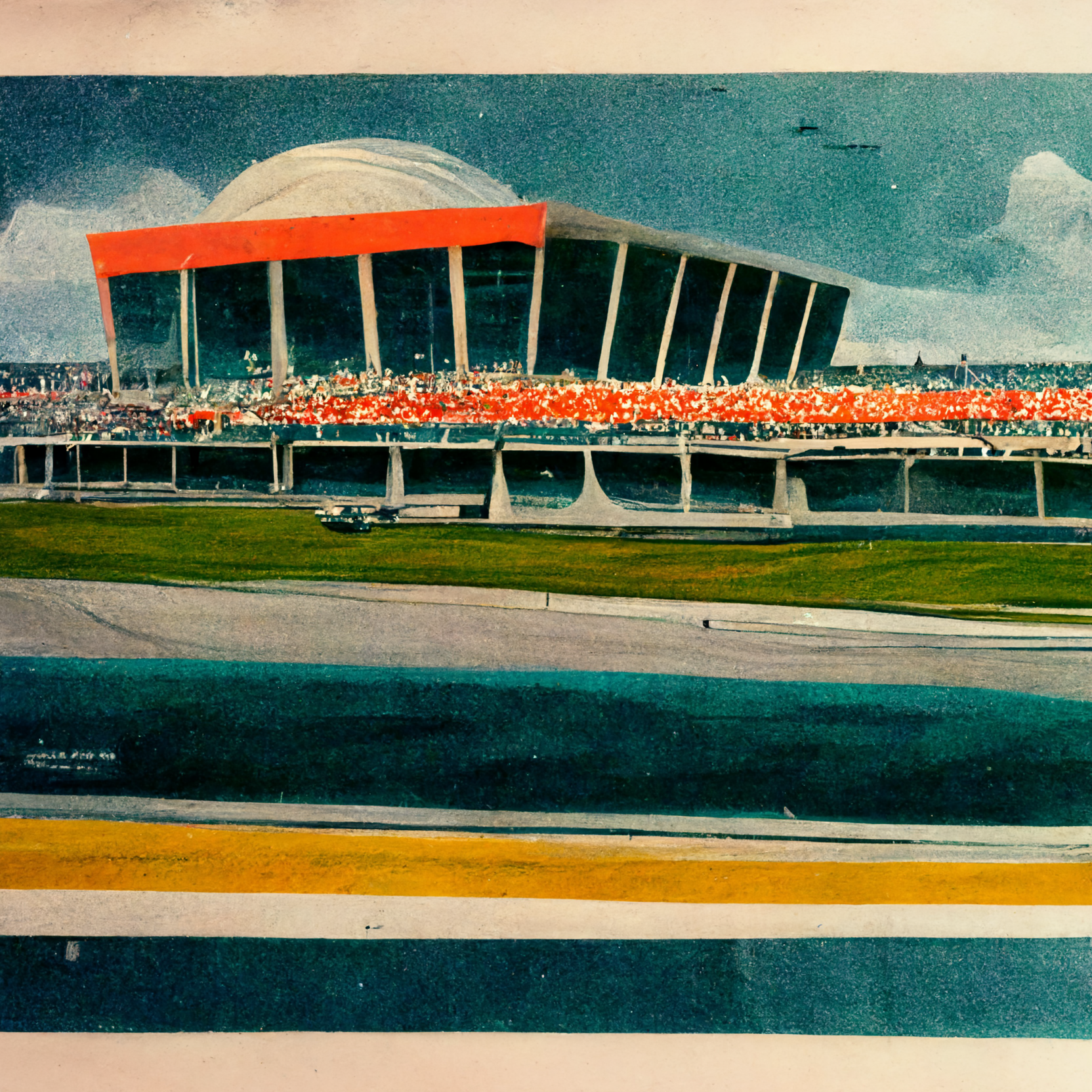
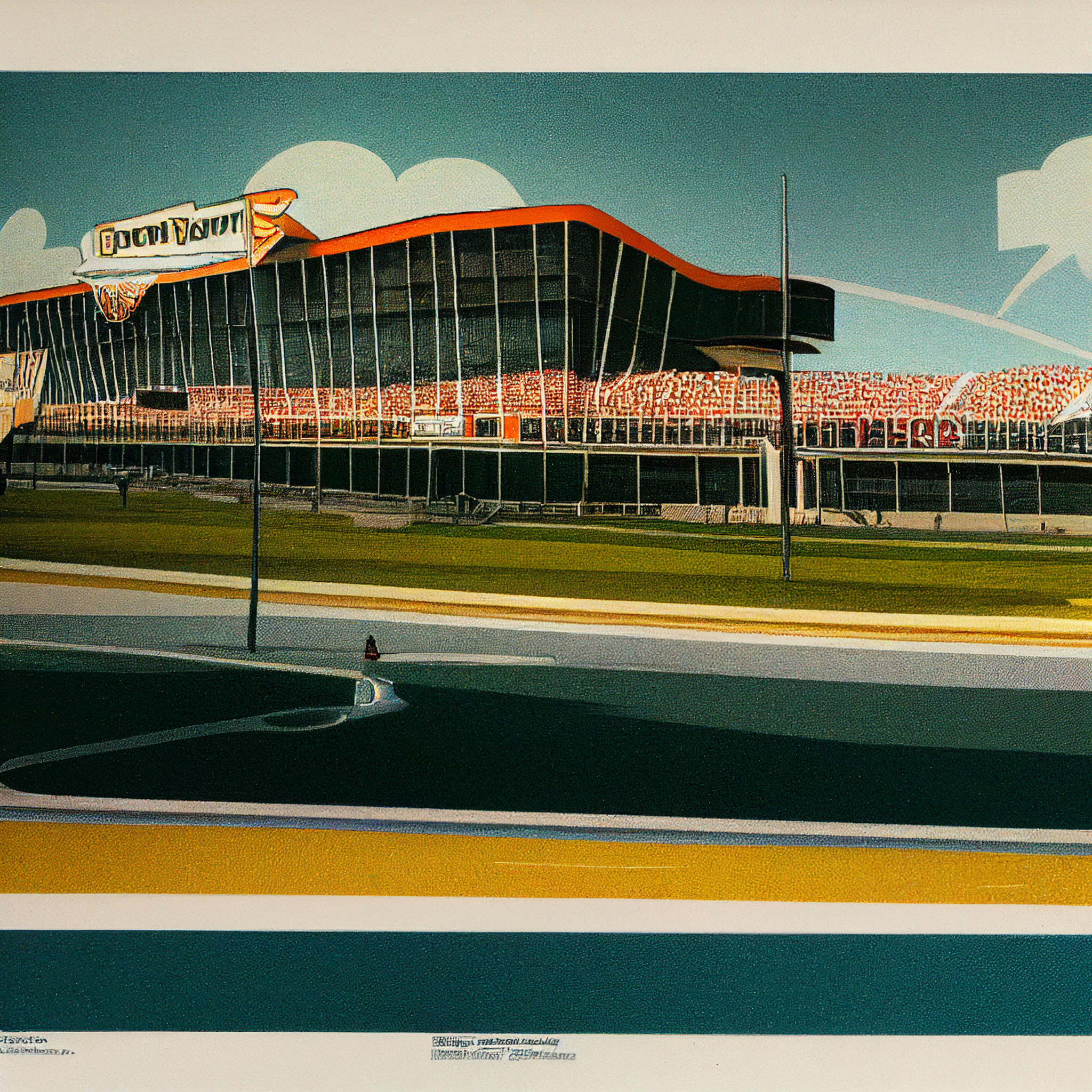
/imagine a postcard of daytona speedway • via midjourney
Daytona International Speedway, Florida
I’m not sure what I thought I’d get with this prompt—the inside of the Speedway, ideally. Here’s the outside and, oddly, also the inside.
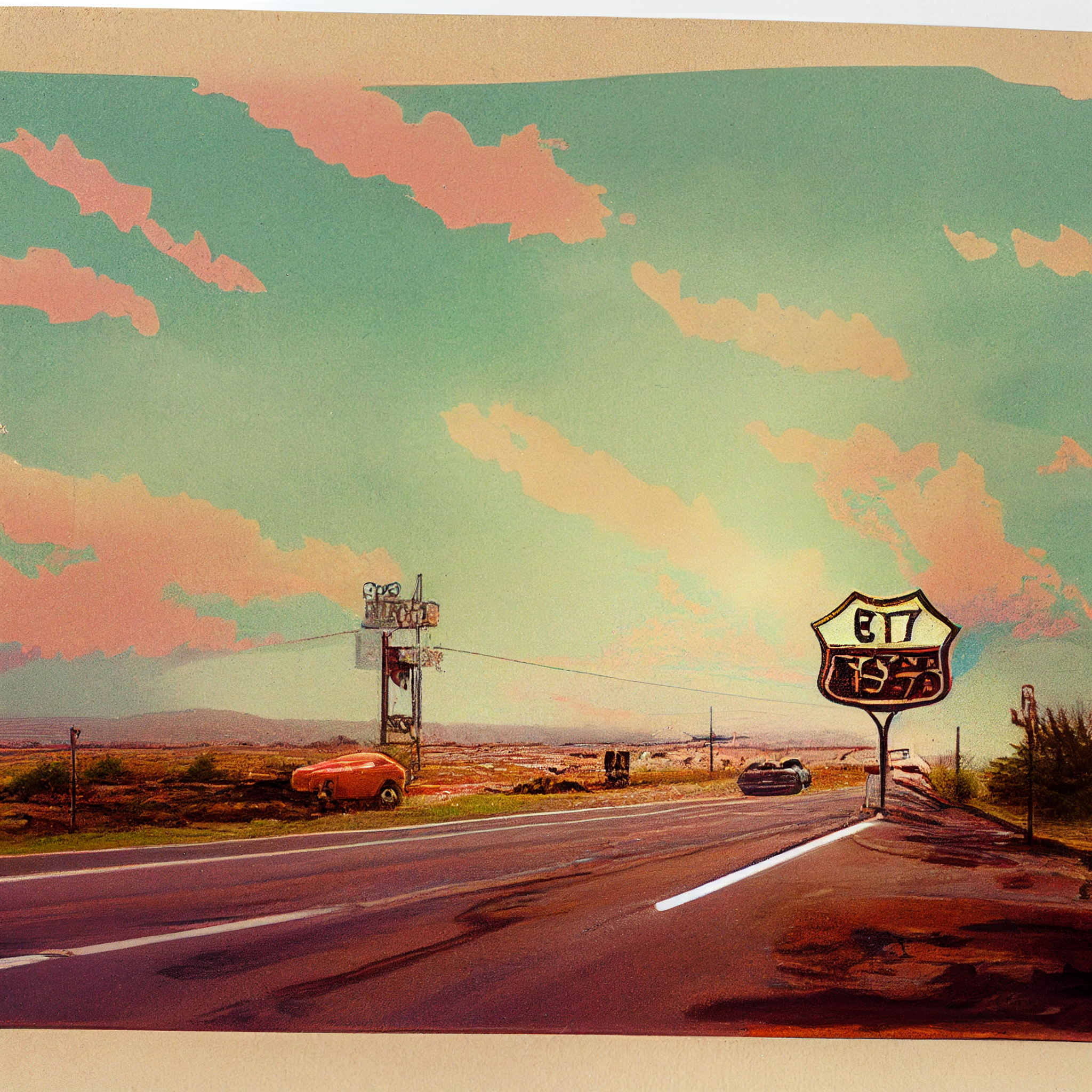
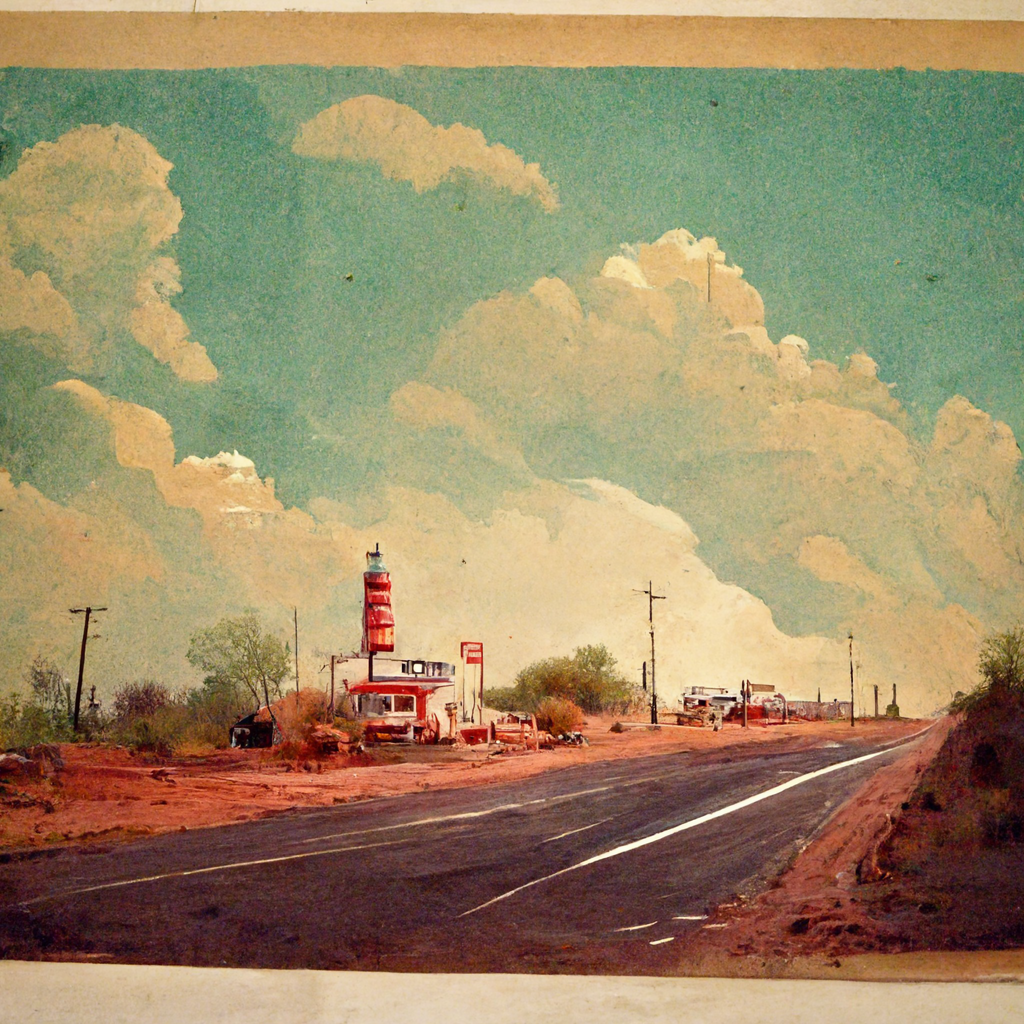
/imagine a postcard of route 66 • via midjourney
Route 66
I wanted to show the steps along the way of how the same prompt can generate a more detailed image through iteration. What often begins as a very simple depiction is refined in stages; you saw how these began at the start of this article.
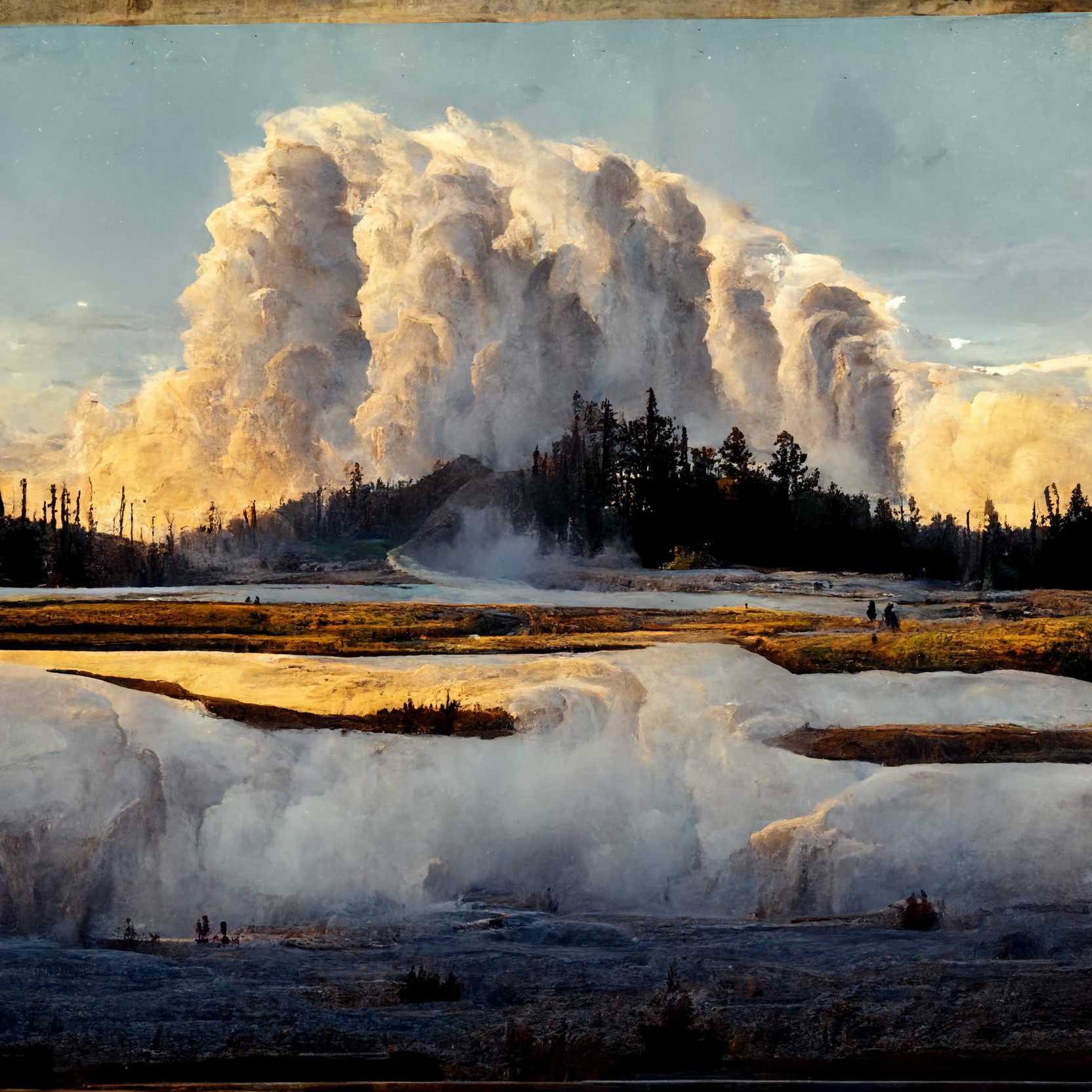
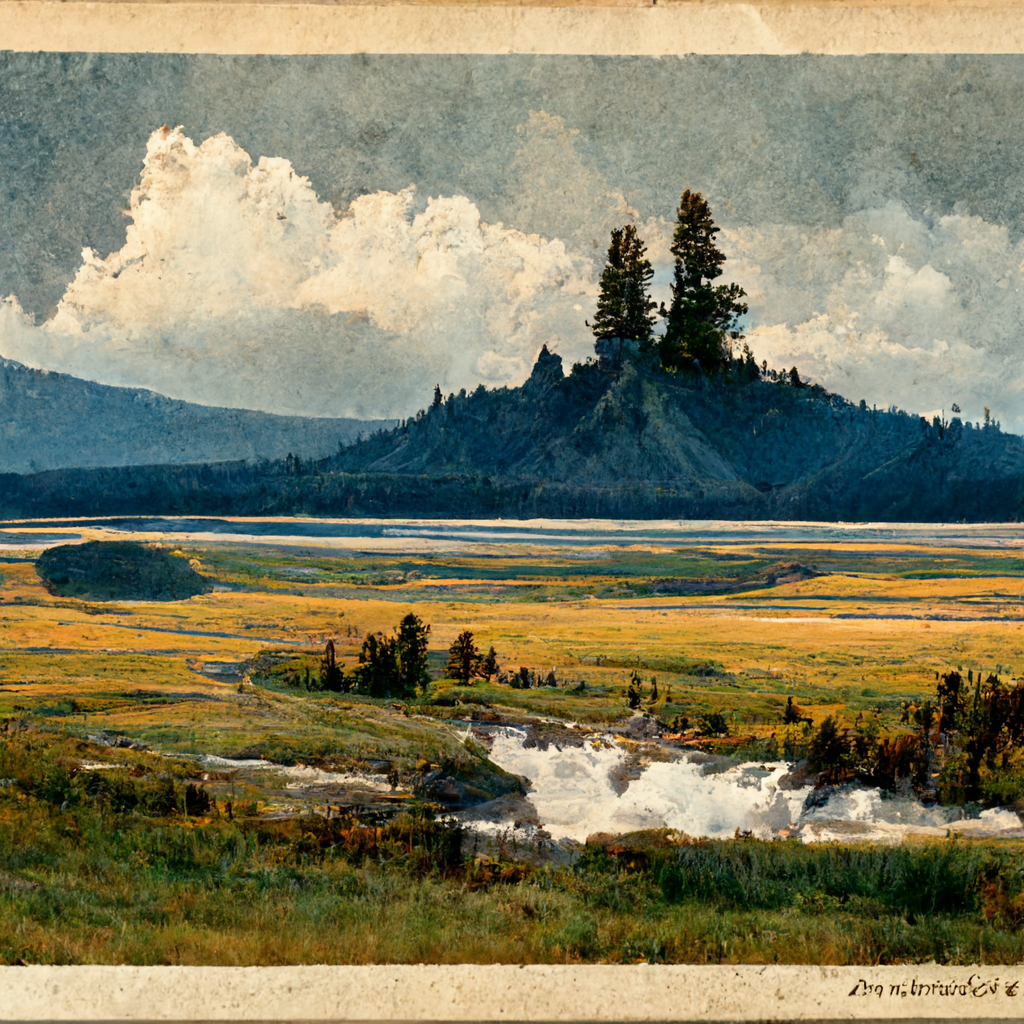
/imagine a postcard of yellowstone park • via midjourney
Yellowstone National Park, Wyoming
Expansive, moody, dreamy, natural—I’ve never seen Yellowstone for myself, but I still think AI did a great job on these two landscapes.
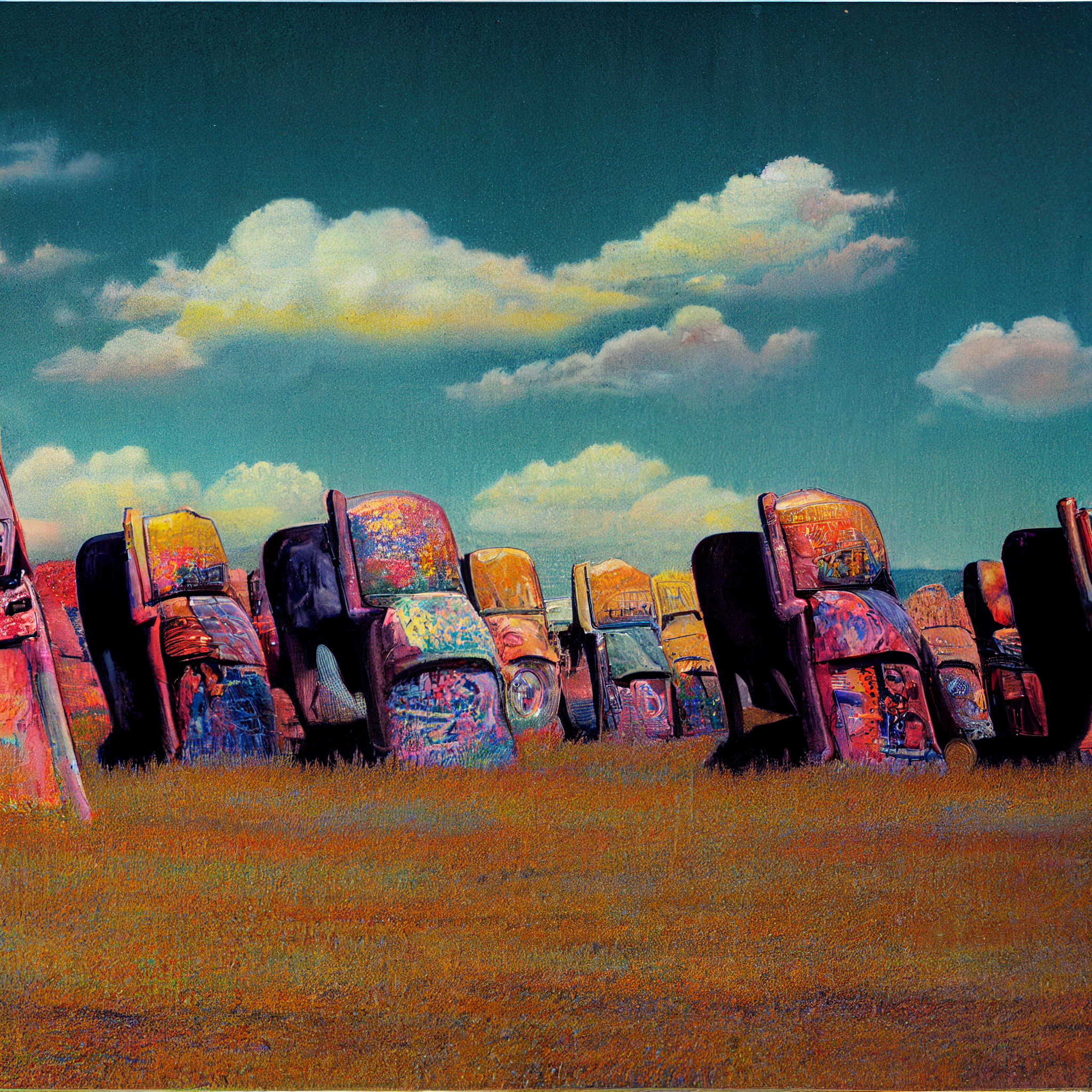
Cadillac Ranch, Amarillo, Texas
You’re looking at a place that AI has apparently been to, because I thought it would be thrown off by the specific ask of Cadillac + location. This is Cadillac Ranch—a bunch of half buried cars.
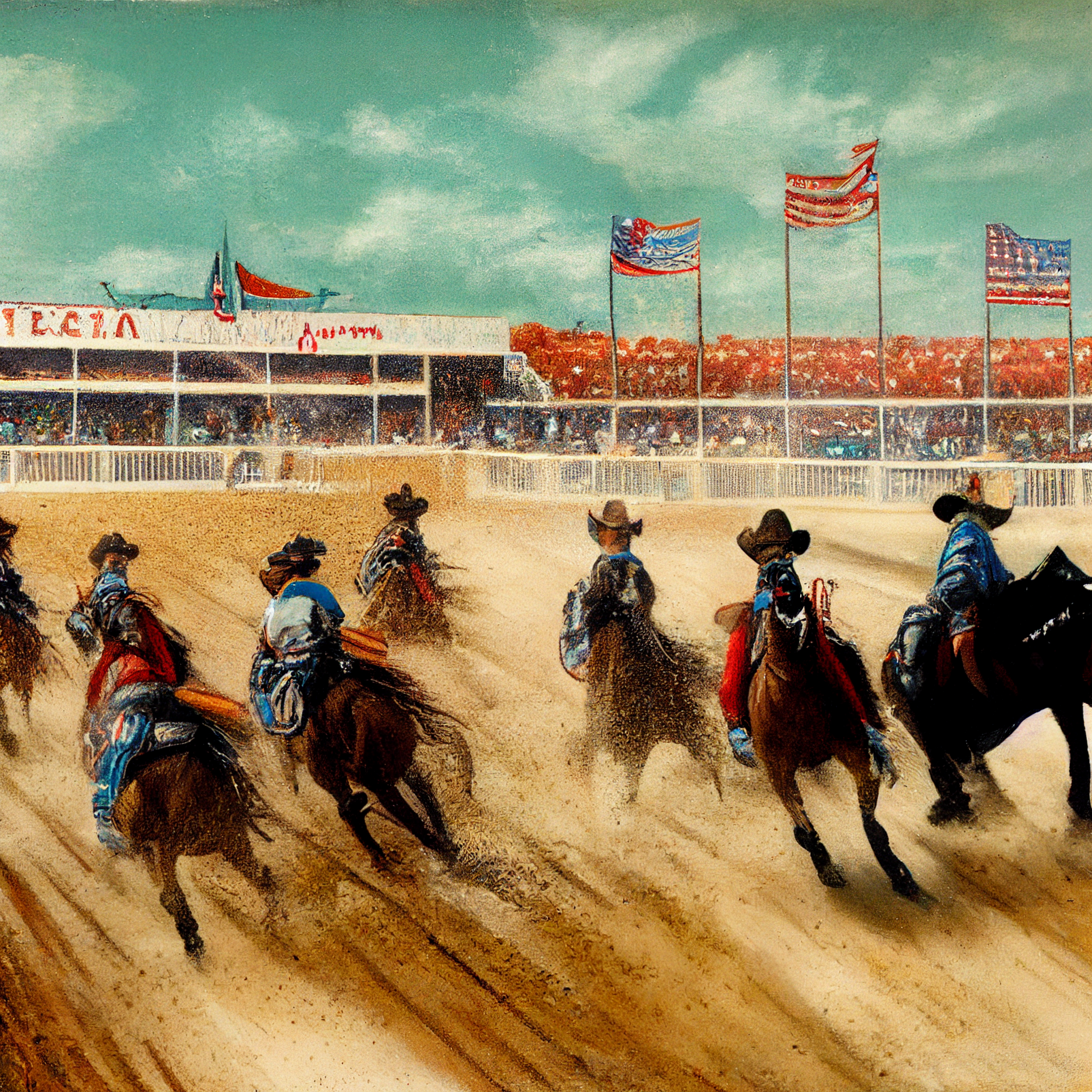
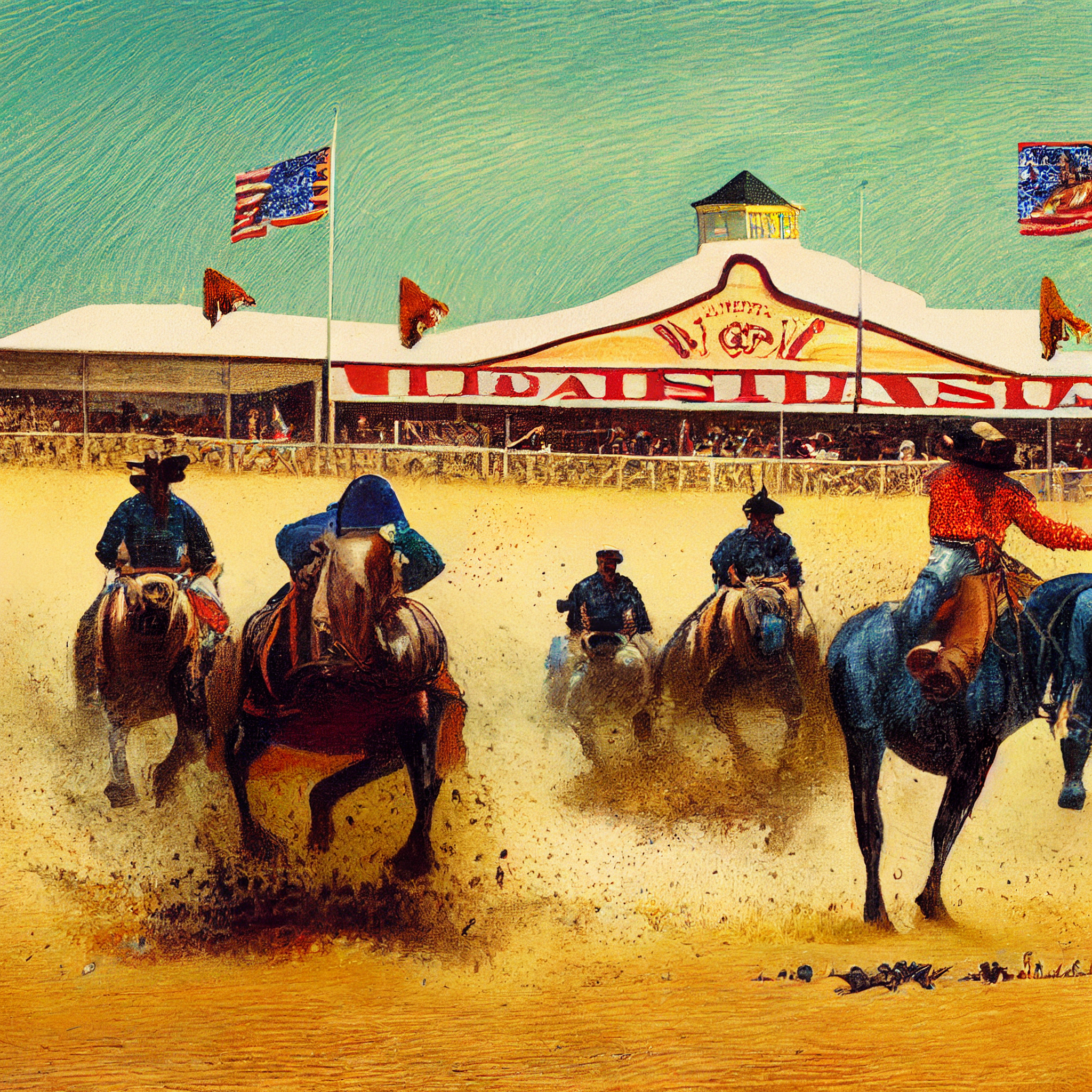
/imagine a postcard of a rodeo in texas • via midjourney
a ‘rodeo in Texas’
Like the motel in Ohio, this prompt was less about a specific location and more about the idea of a location. This AI rodeo looks epic, until you realize you’d be the only one there with a face.
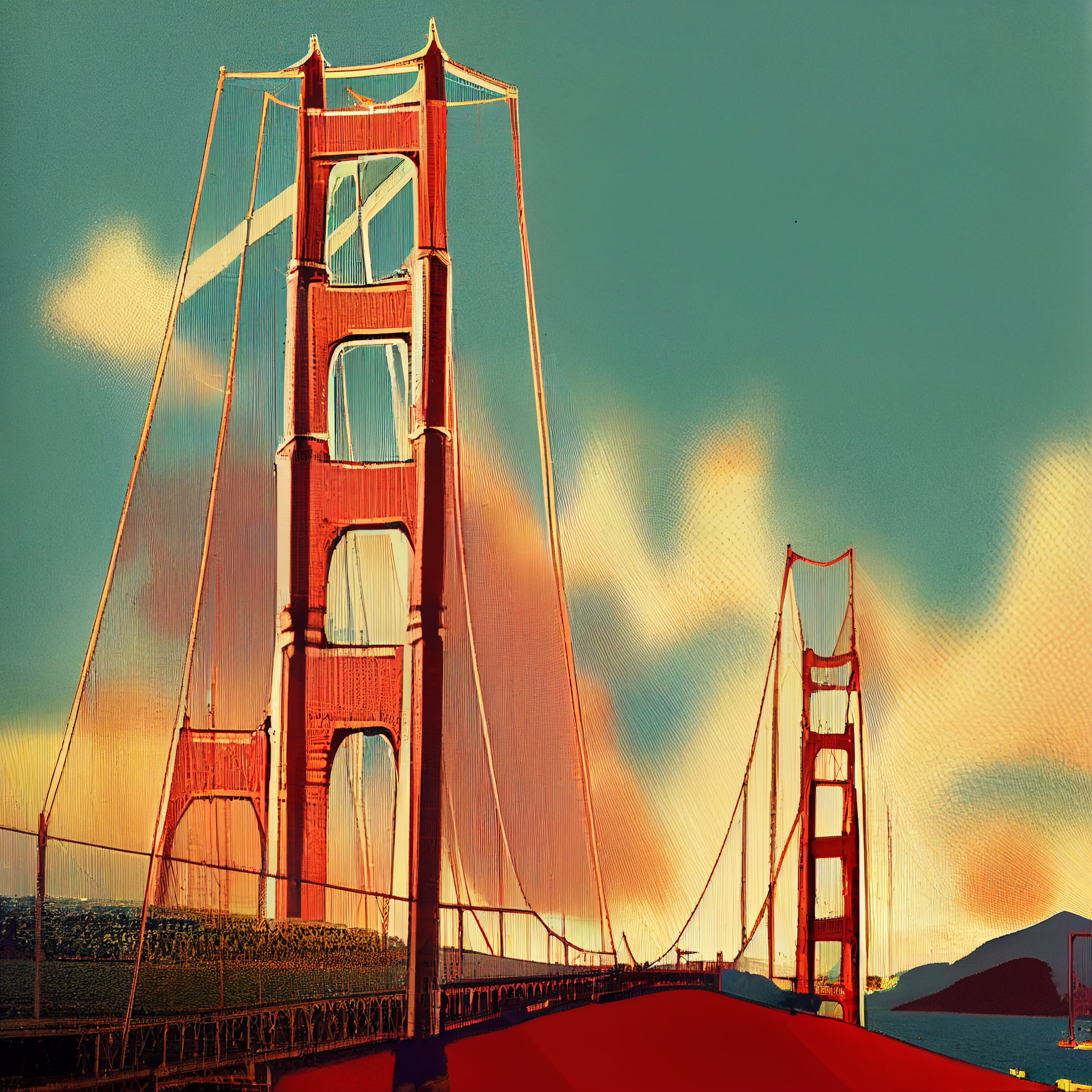
Golden Gate Bridge, San Francisco
Would you let an artist design a bridge? After seeing this, I was (and remain) curious on why certain angles, perspectives, and shapes reliably seem to lead AI into some fabulous engineering dead ends.


/imagine a postcard of pike market seattle • via midjourney
Pike Place Market, Seattle, Washington
A longtime destination, Pike Place Market is where Starbucks got its start—now you know why some of its roasts reference it. Years ago, I visited both the market and that ’bux…the AI version isn’t too far off from reality but is sorely missing the life found in places like this.
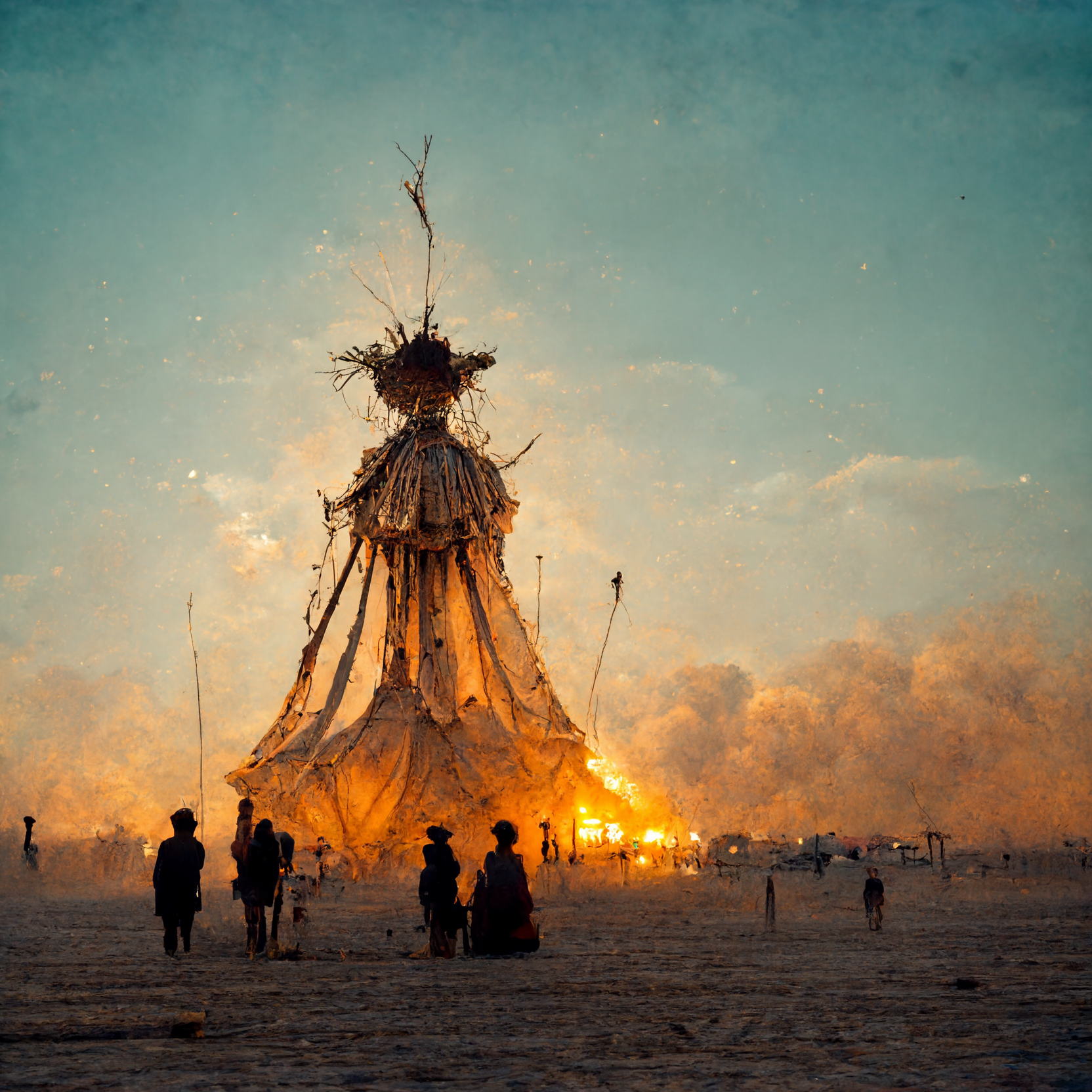
Burning Man (Black Rock City, Nevada)
Of all the destinations here, can we just agree this AI-rendered depiction is the most hauntingly beautiful on the list?
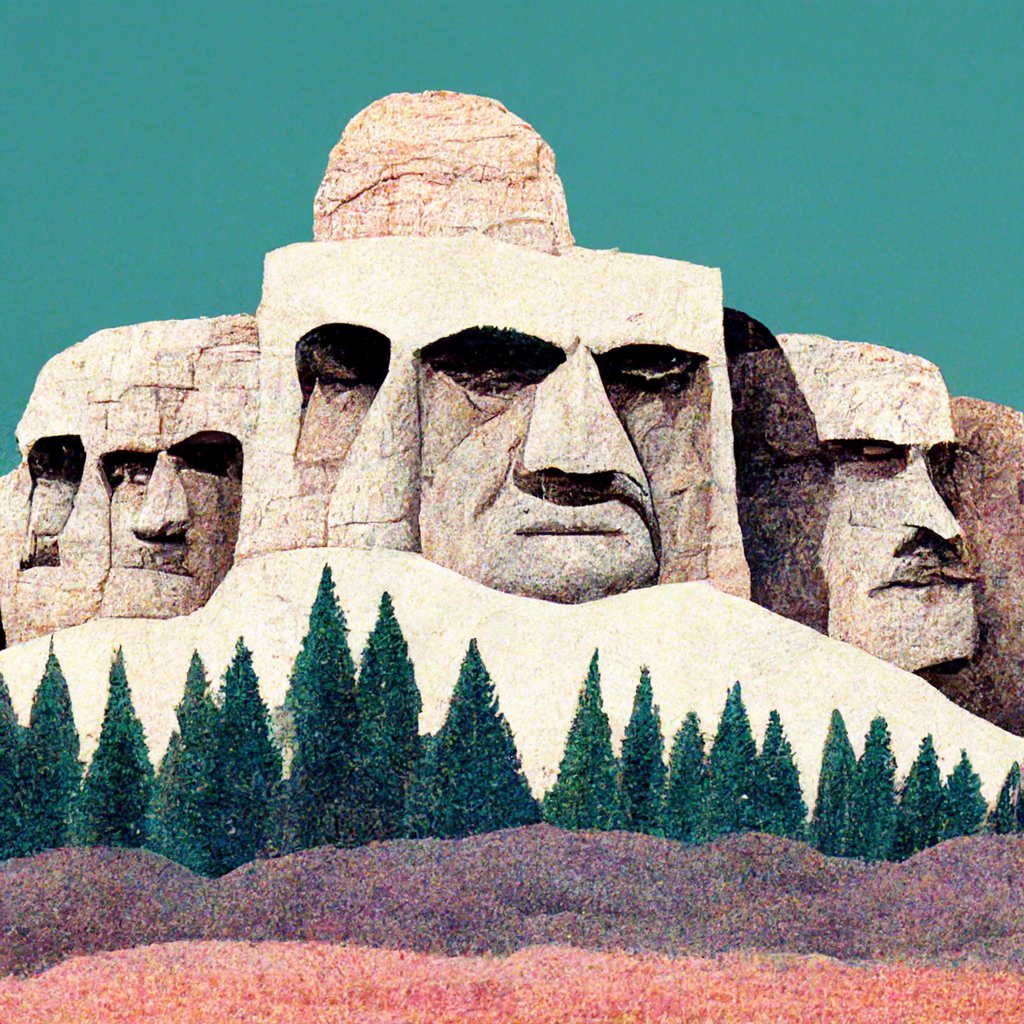
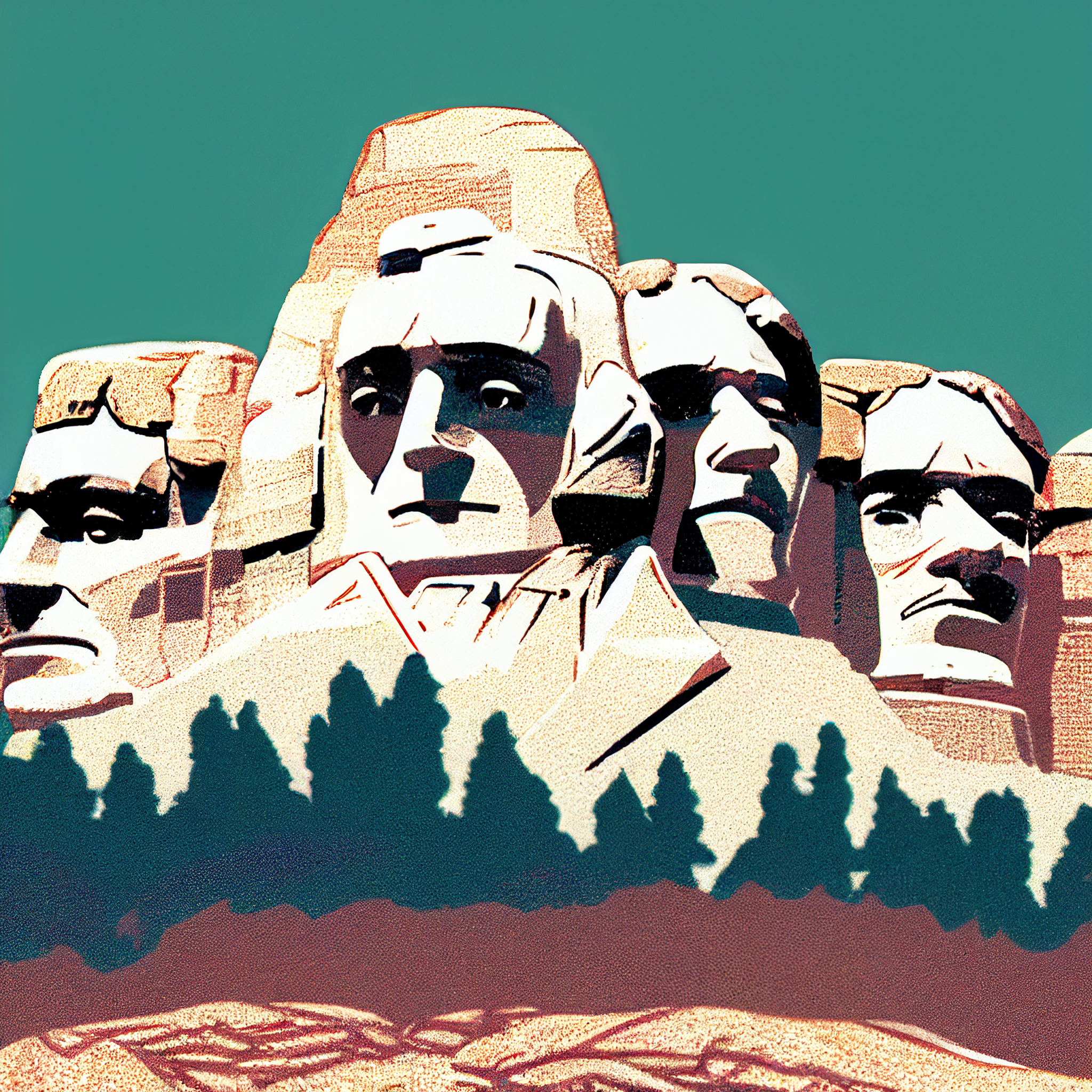
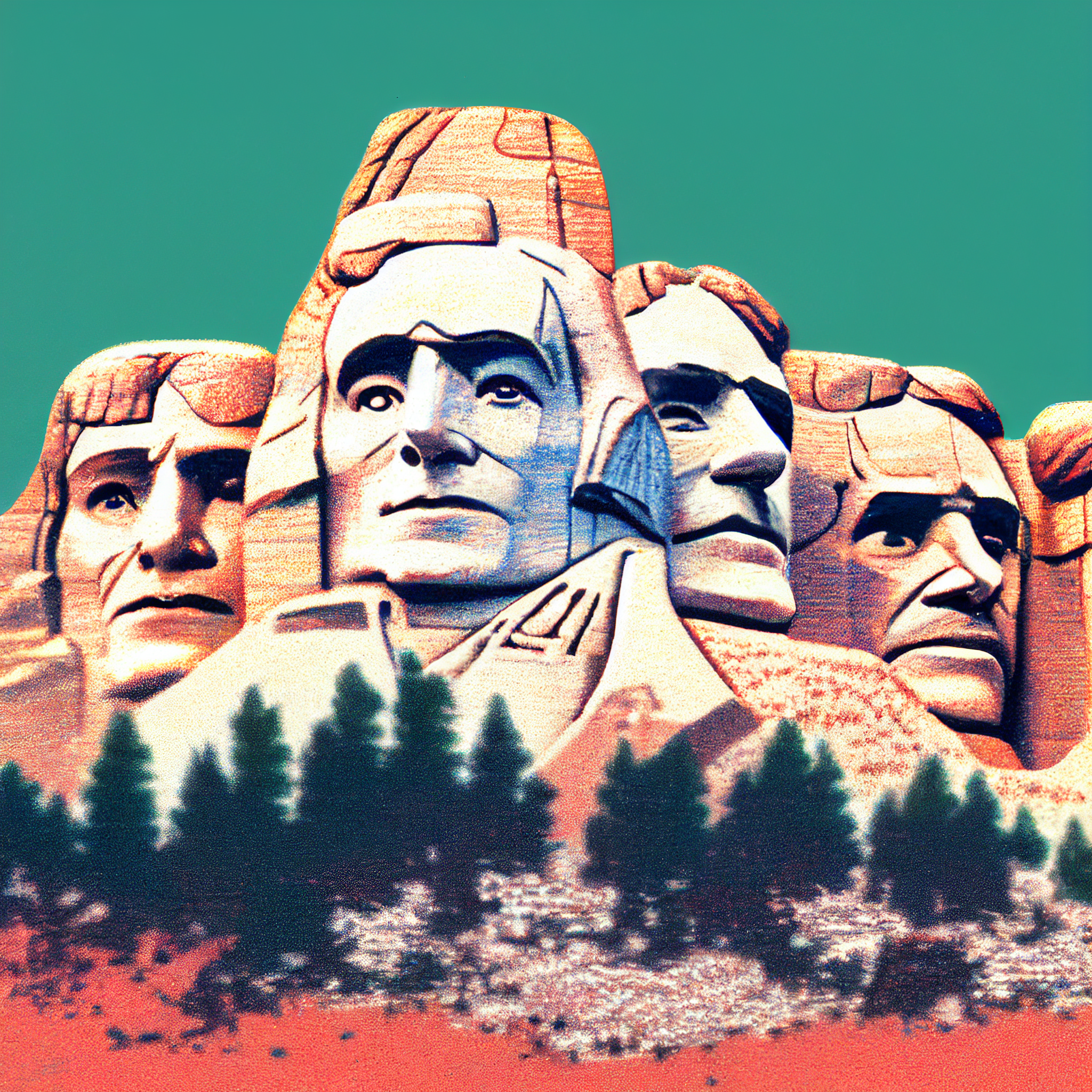
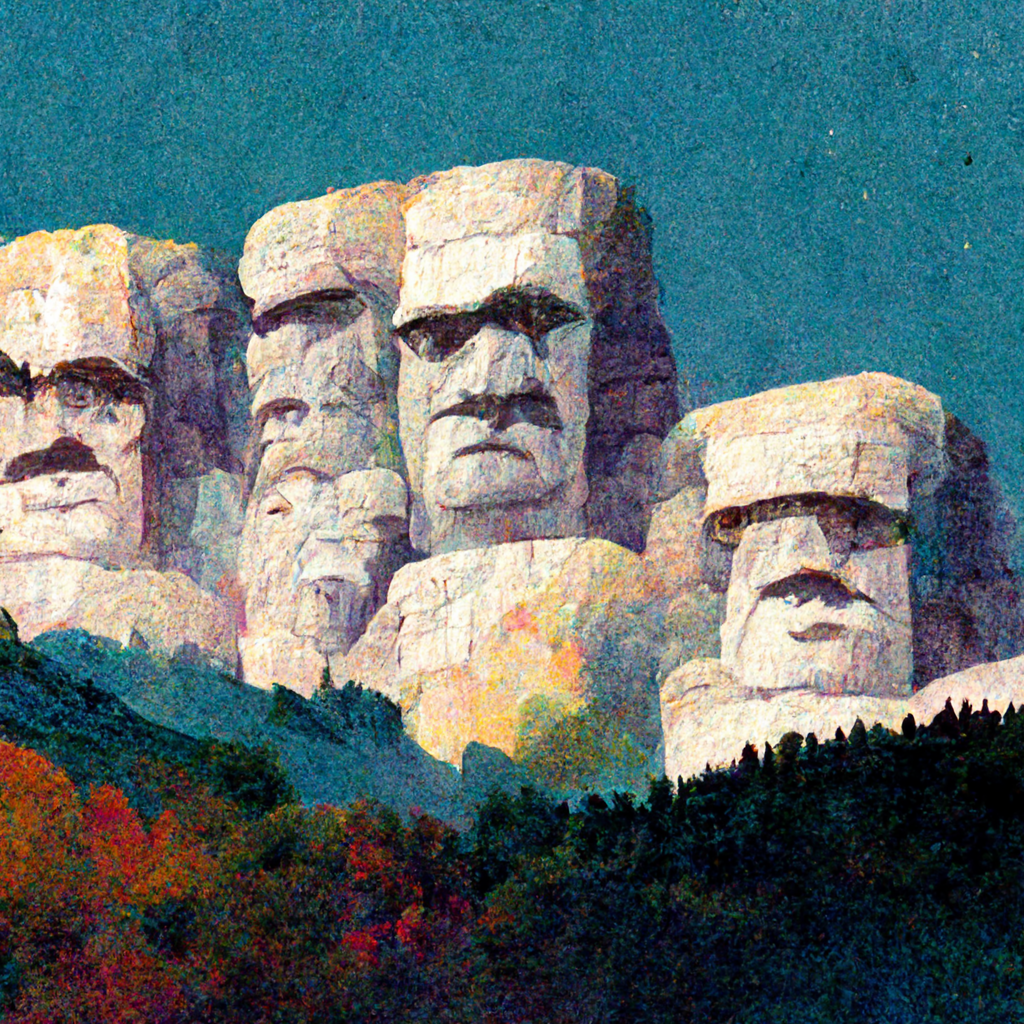
/imagine a postcard of mount rushmore • via midjourney
Mount Rushmore, Keystone, North Dakota
No offense to the artists who work on the original, but these AI versions of Mount Rushmore f**k. Abstract, Orwellian founding faces are where it’s at.
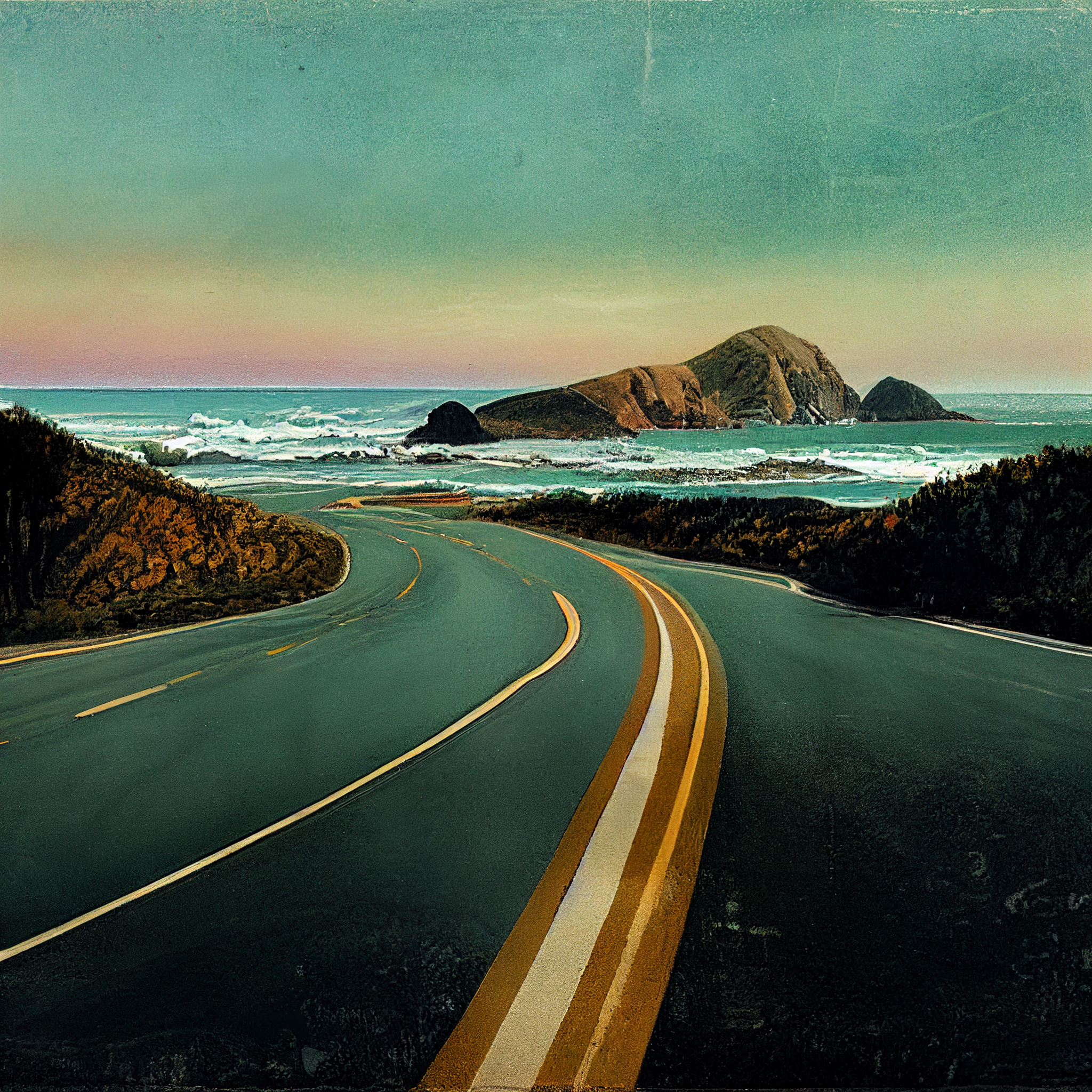
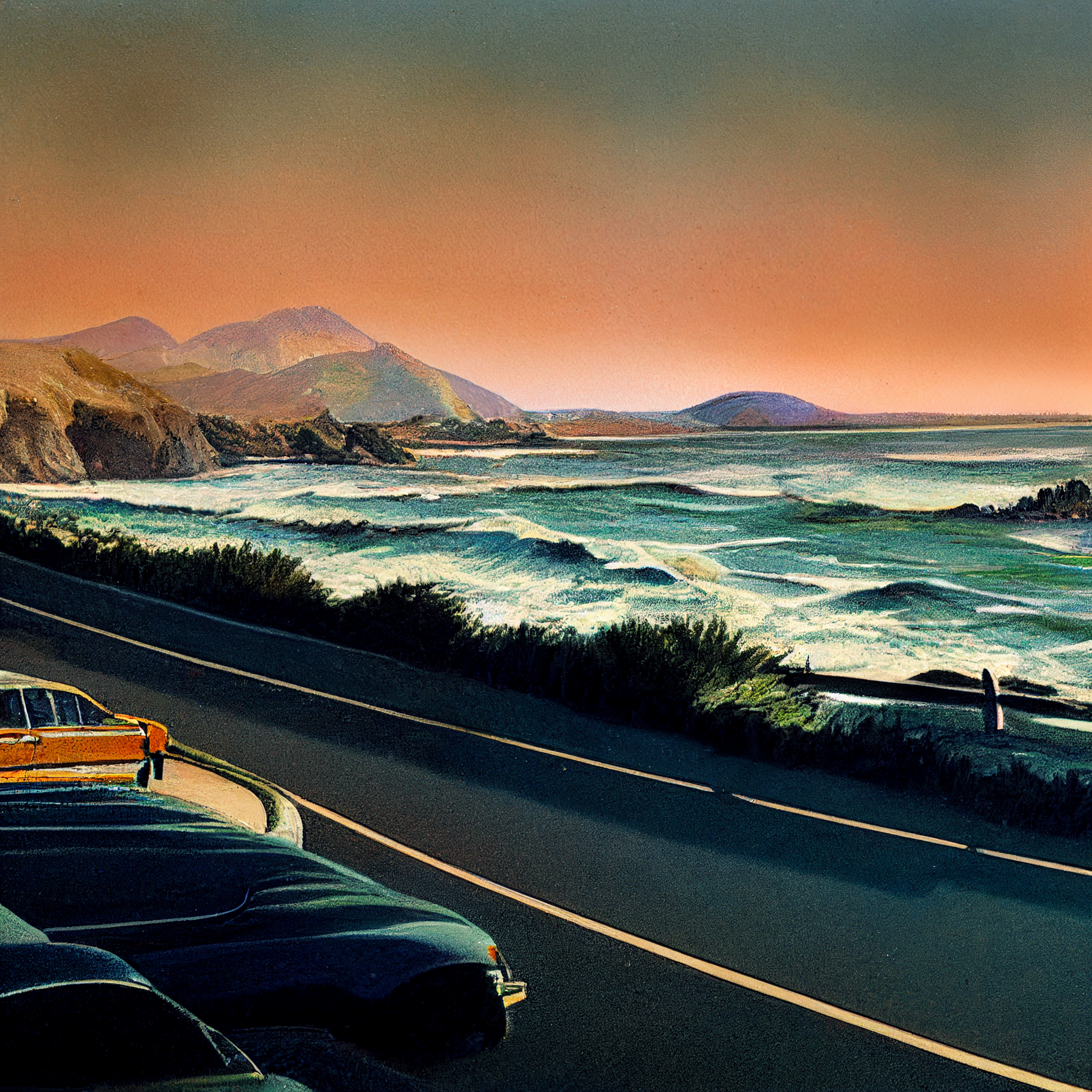
/imagine a postcard of california highway 1 • via midjourney
California Highway 1
Do I need to explain this? There are a million reasons why this picturesque, history-rich road is its own destination.
In many places carved out of steep mountainside right next to the Pacific Ocean with countless attractions, beaches, and multi-million dollar properties, the most dangerous part of the drive is actually in keeping your eyes on the road.

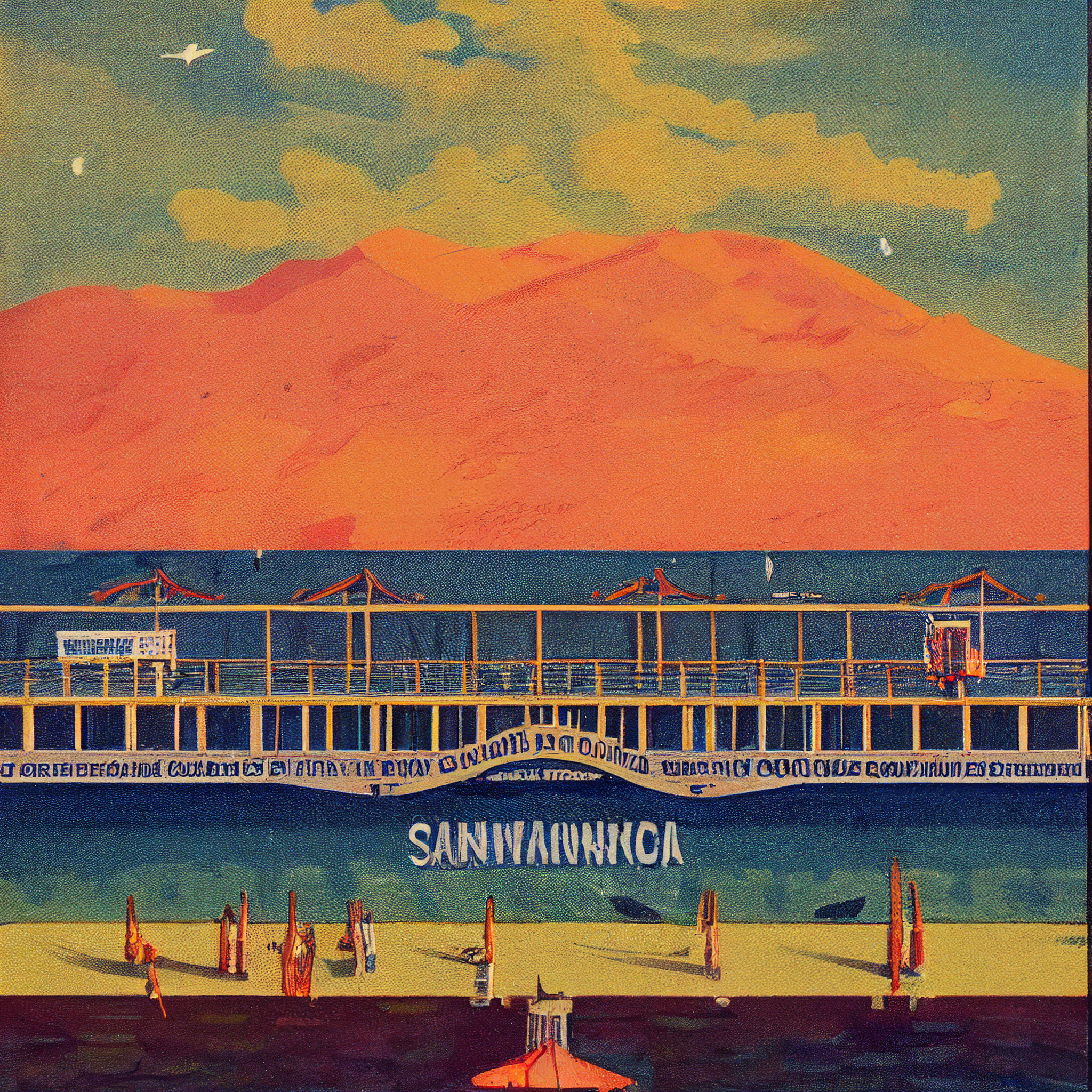
/imagine a postcard of santa monica pier • via midjourney
Santa Monica Pier, Santa Monica, California
We’re at the end, where every good coast-to-coast drive should, where the ocean meets commerce in California. Thanks for trusting us—me and AI, that is—with your time. ;)
Keep in mind: You are judging these based on what you think these places look like, although (like me) you may have never been to a few of them. Why, then, does Times Square feel a touch more authentic than many of the others—have movies, television, and the arts so firmly ingrained that specific place in our meta?
Which destination(s) are we heading to next? Would you get into a car with AI driving? Let me know in the comments or on the speedster.news Discord.
All images in the article were generated by the author using Midjourney AI.
-30-
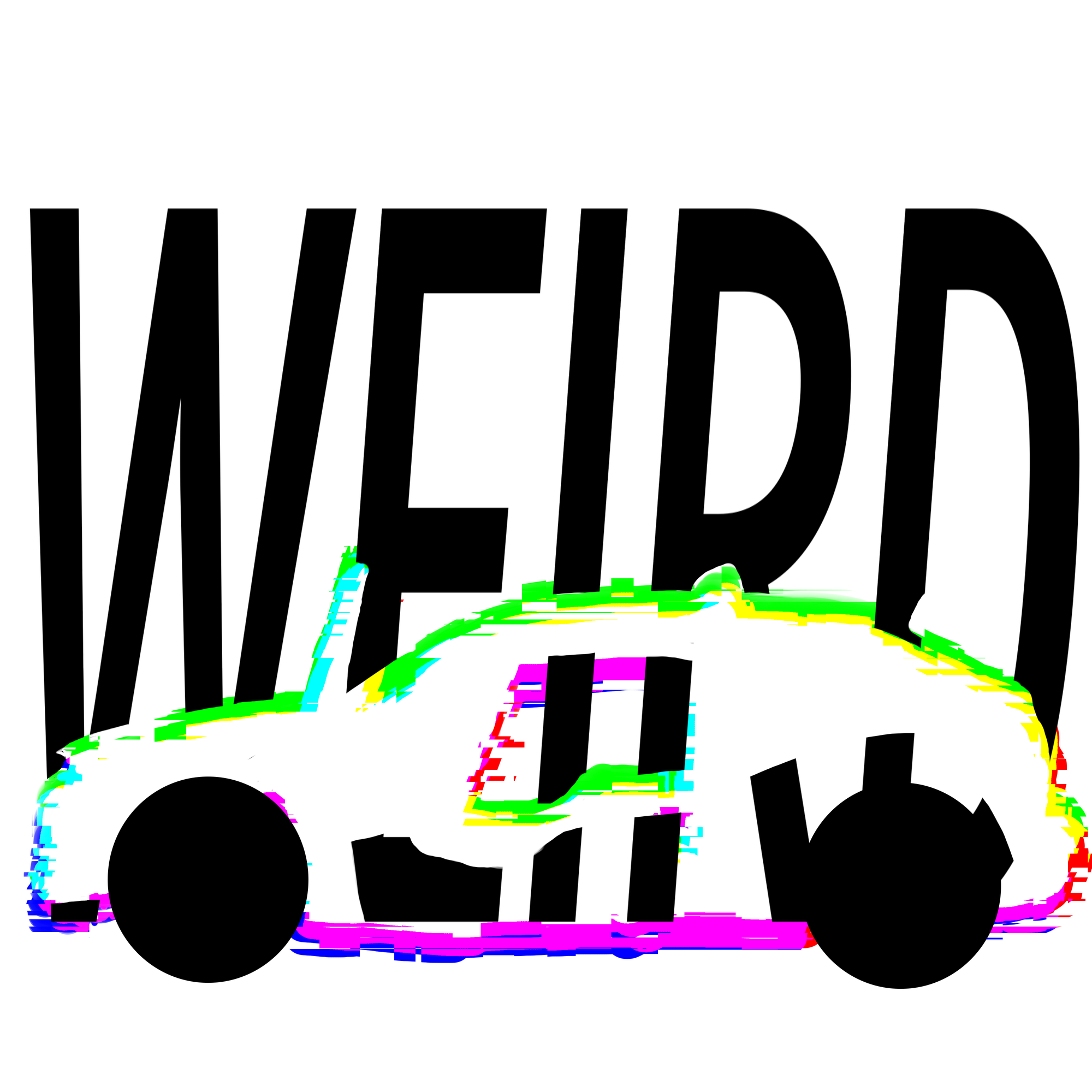
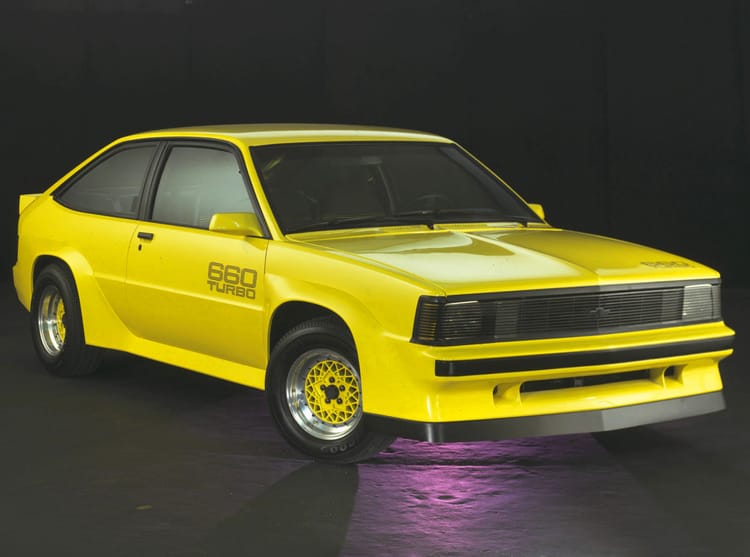
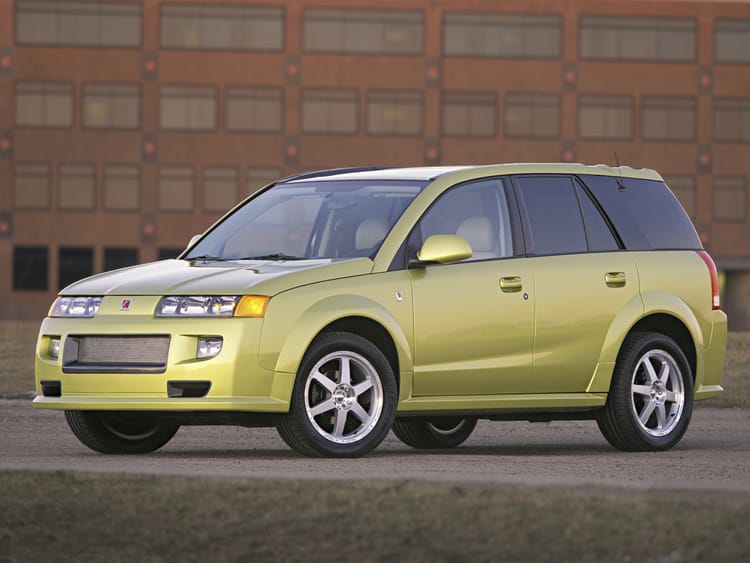
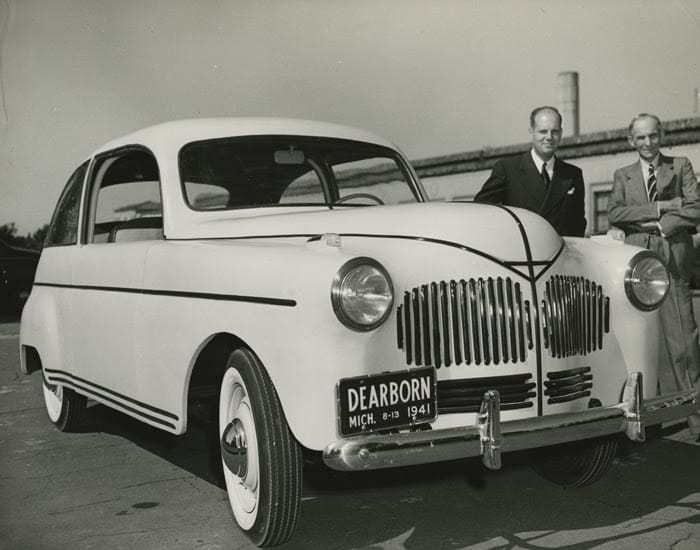
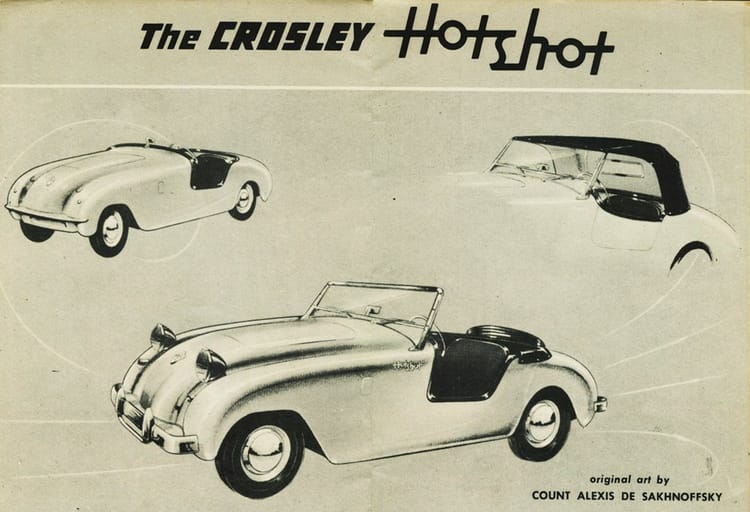
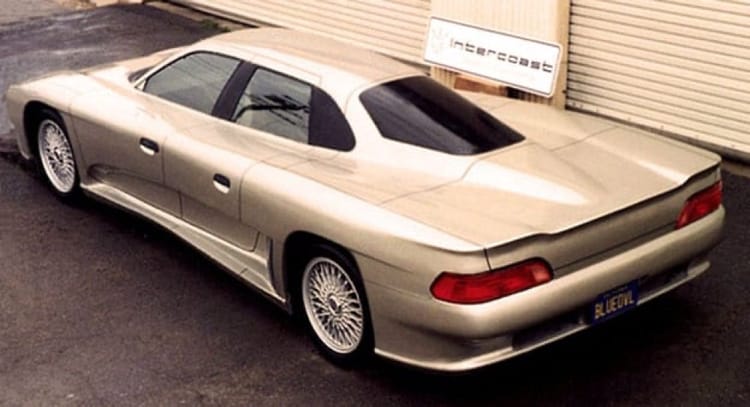
Member discussion